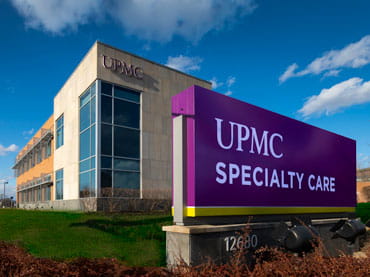Welcome to the UPMC Matt El-Kadi Spine Center, your partner in comprehensive spine care. We understand how debilitating spine issues can be. Our dedicated team of experienced specialists is here to help you navigate your journey to better spine health. We offer a range of services to meet your unique needs. From comprehensive exams to accurately diagnose your spine condition to advanced techniques to address spine issues with minimal disruption to your daily life, we have you covered. We are committed to helping you regain your quality of life through high-quality spine care.
Call us today to schedule your consultation and take the next step to reclaiming your best life!
Our office is conveniently located at UPMC Specialty Care within three and a half miles of Exit 73 (Wexford) of I-79, five miles of Exit 78 (Cranberry/Mars) of I-79, and four miles of Exit 28 (Cranberry) of I-76/PA Turnpike. We are situated on the corner of Route 19/Perry Highway and Nicholas Dr.
Our Services

















